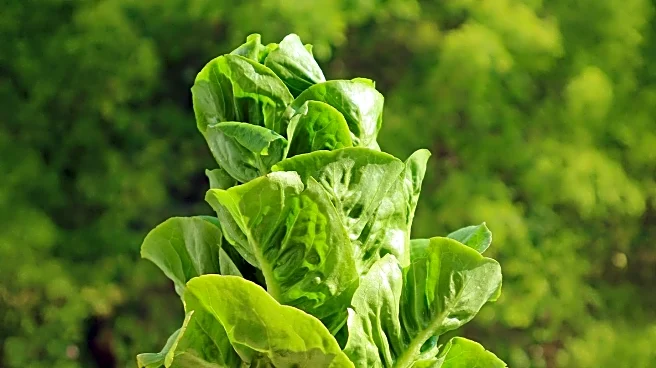What's Happening?
The government of Andhra Pradesh, led by Agriculture Minister Kinjarapu Atchannaidu, has announced a plan to distribute subsidised groundnut seeds to farmers for the upcoming Rabi season. This initiative is part of a broader effort to support agricultural
production and strengthen the rural economy amidst fiscal challenges. Minister Atchannaidu emphasized the government's commitment to farmer welfare, assuring cultivators that their prosperity remains a top priority. The government has instructed officials to facilitate the distribution of these seeds statewide, aiming to meet individual farmer demands and integrate innovative ideas and technology to make farming more profitable.
Why It's Important?
This initiative is significant as it addresses the economic challenges faced by farmers in Andhra Pradesh, particularly those cultivating groundnuts. By providing subsidised seeds, the government aims to reduce the financial burden on farmers, potentially increasing their productivity and income. This move could lead to a more robust agricultural sector, which is crucial for the state's economy. The focus on integrating technology and innovative ideas also suggests a shift towards more sustainable and efficient farming practices, which could have long-term benefits for the agricultural community.
What's Next?
The success of this initiative will depend on the effective distribution of seeds and the adoption of new farming techniques by the farmers. The government may need to monitor the implementation closely and provide additional support or adjustments as necessary. Stakeholders, including farmers' associations and agricultural experts, might respond with feedback or suggestions to further enhance the program's effectiveness. The outcome of this initiative could influence future agricultural policies and support programs in the state.
Beyond the Headlines
The initiative highlights the ongoing challenges faced by the agricultural sector in India, including fiscal constraints and the need for modernization. It underscores the importance of government intervention in supporting rural economies and the potential benefits of integrating technology into traditional farming practices. This development could also spark discussions on the role of government subsidies in agriculture and their impact on market dynamics.














